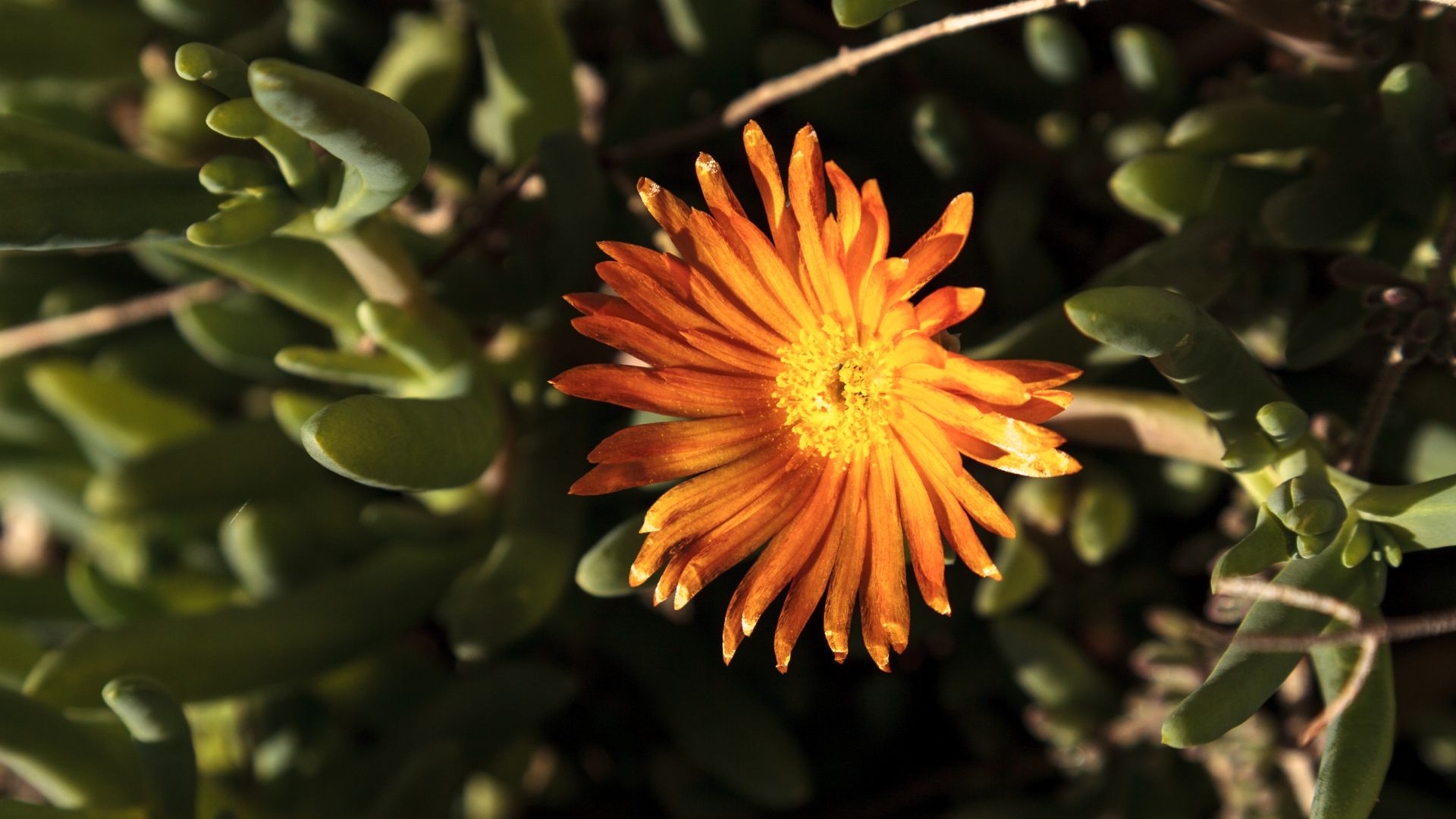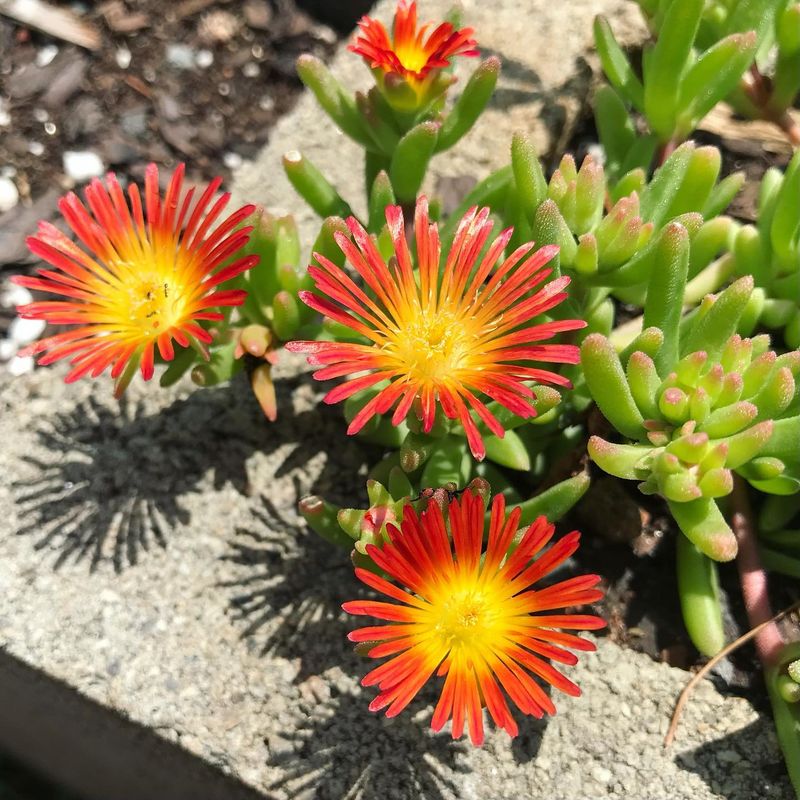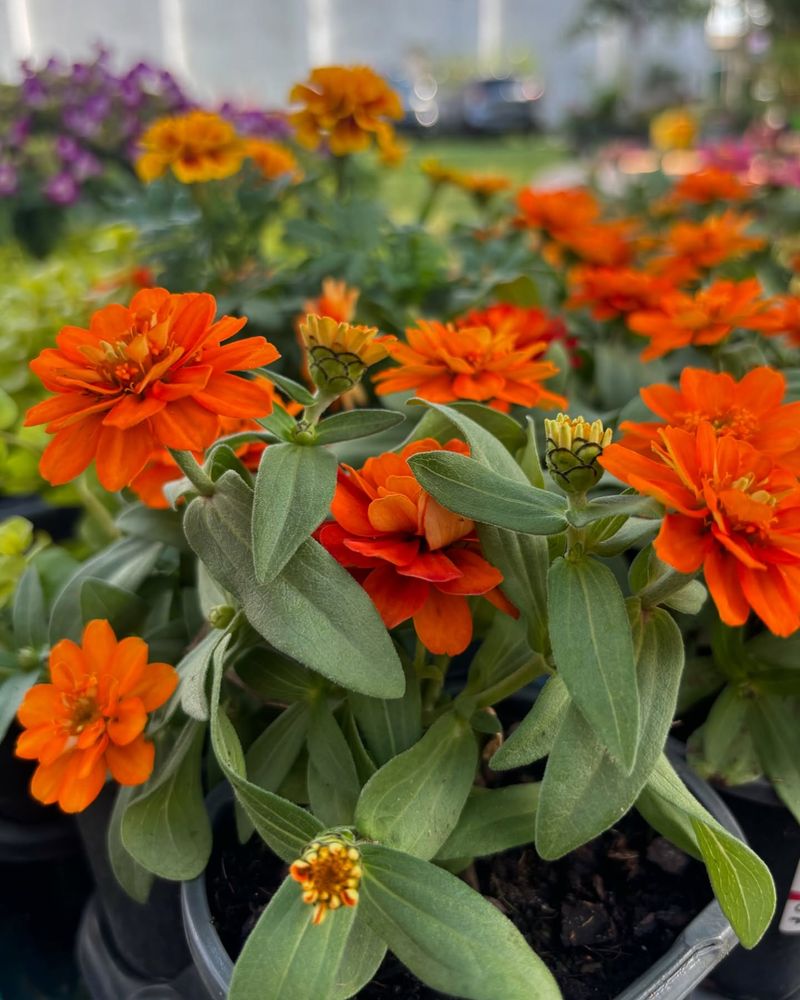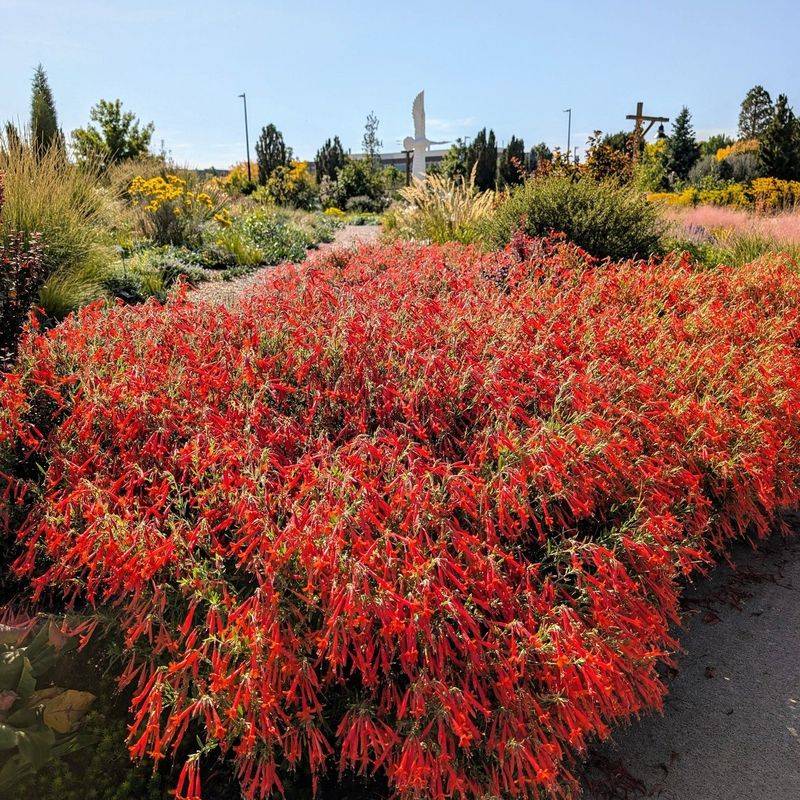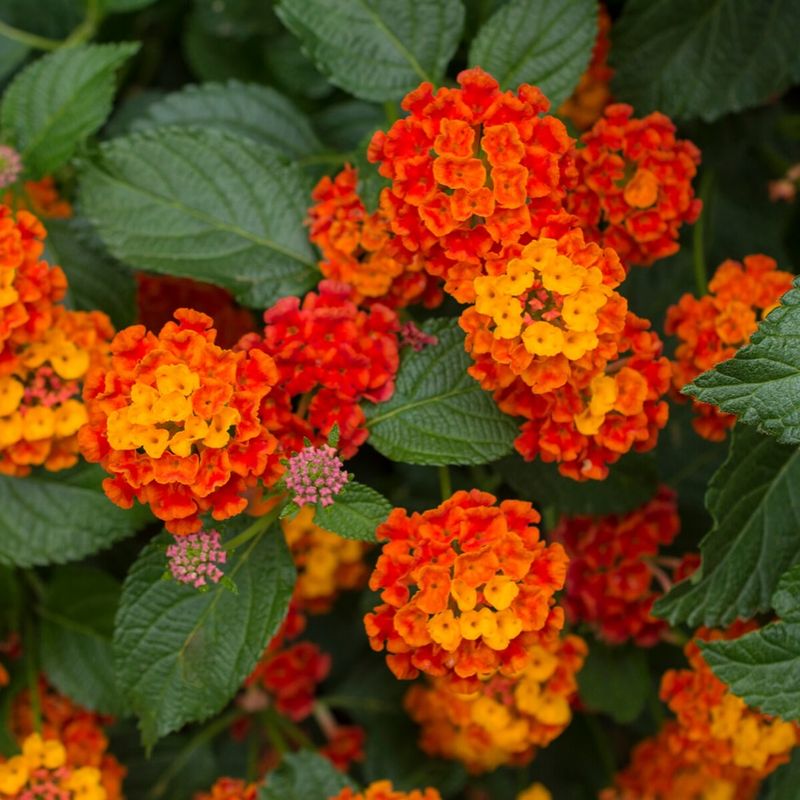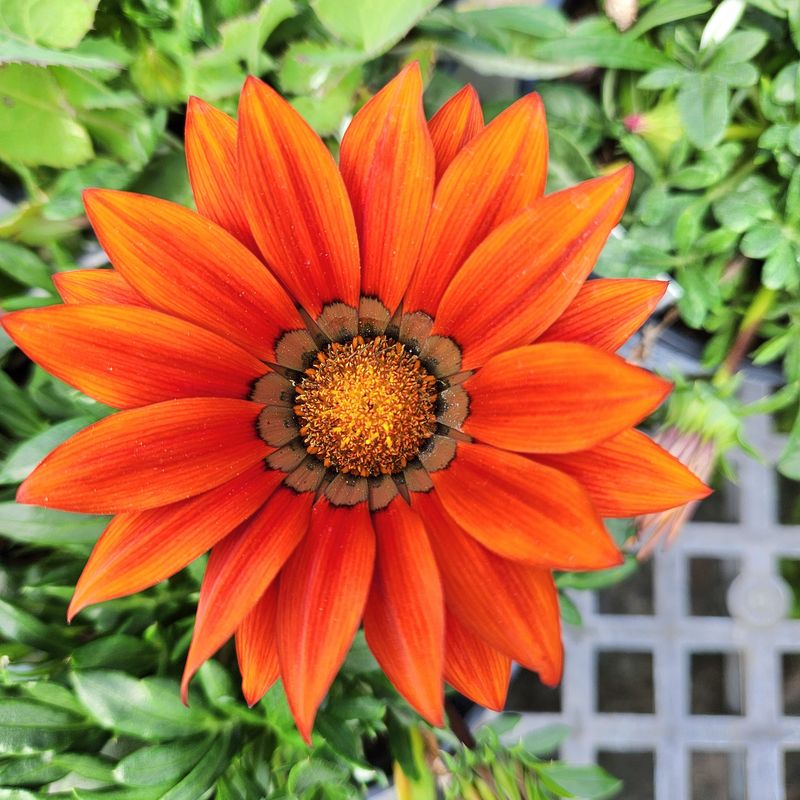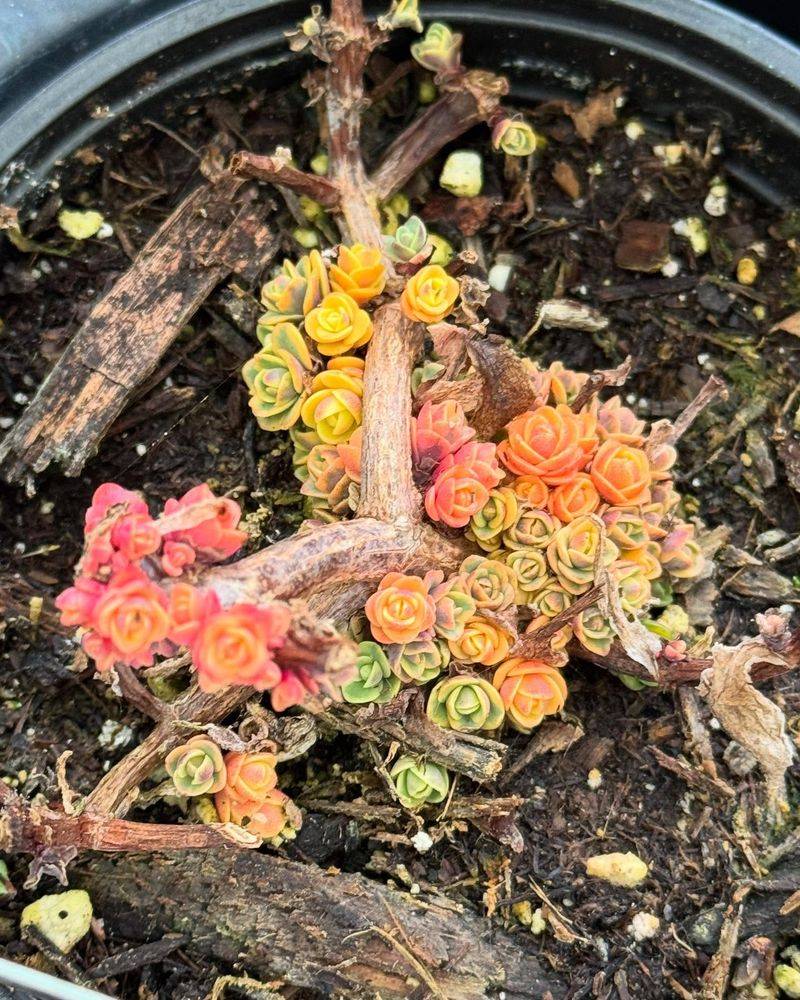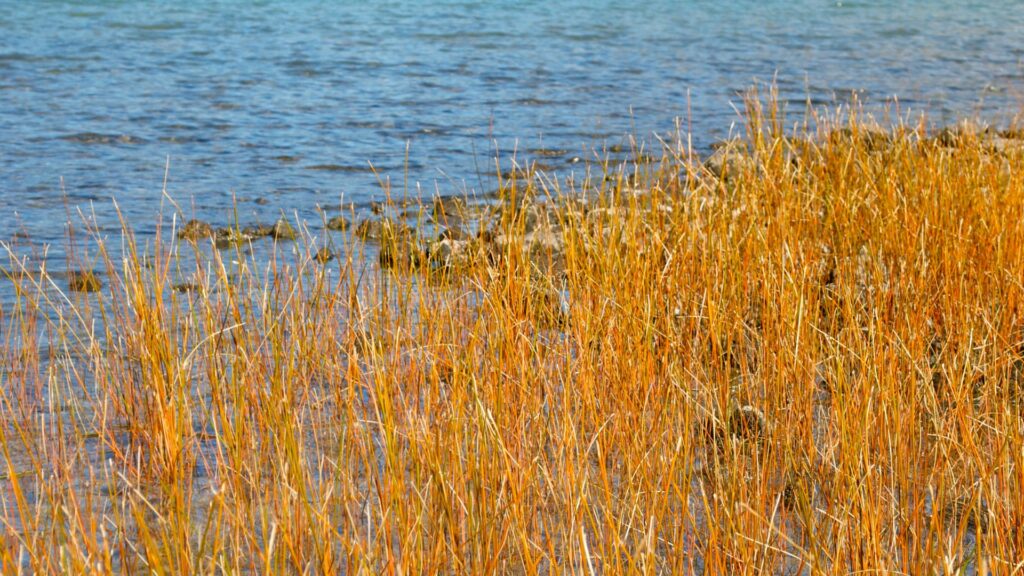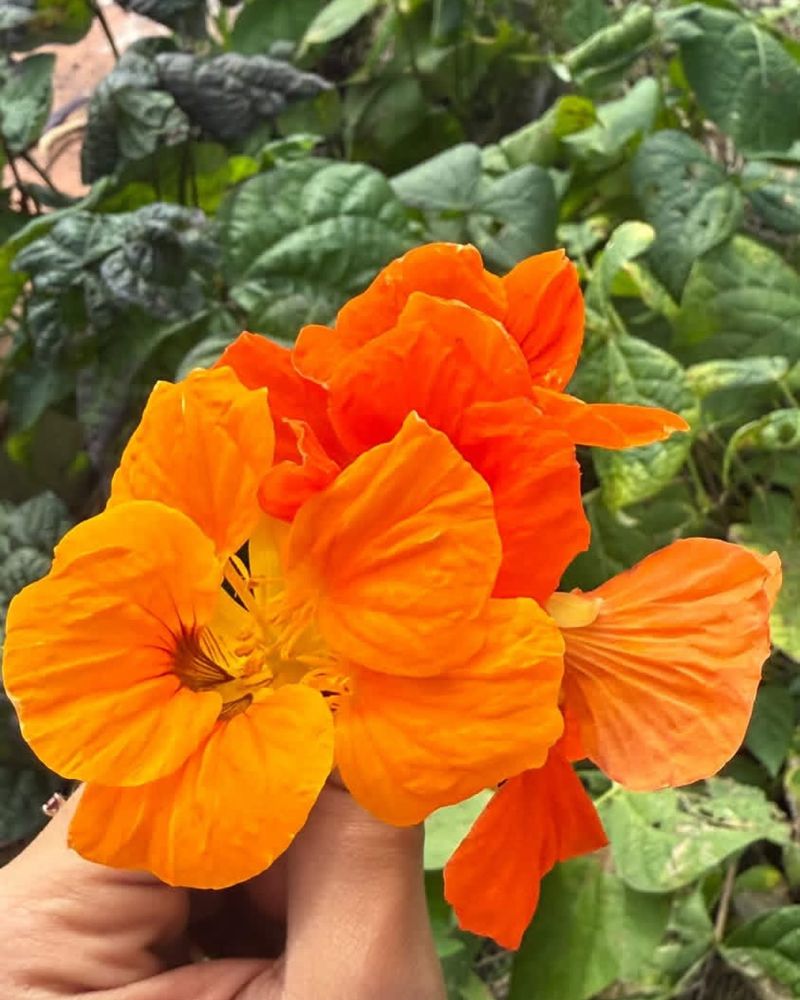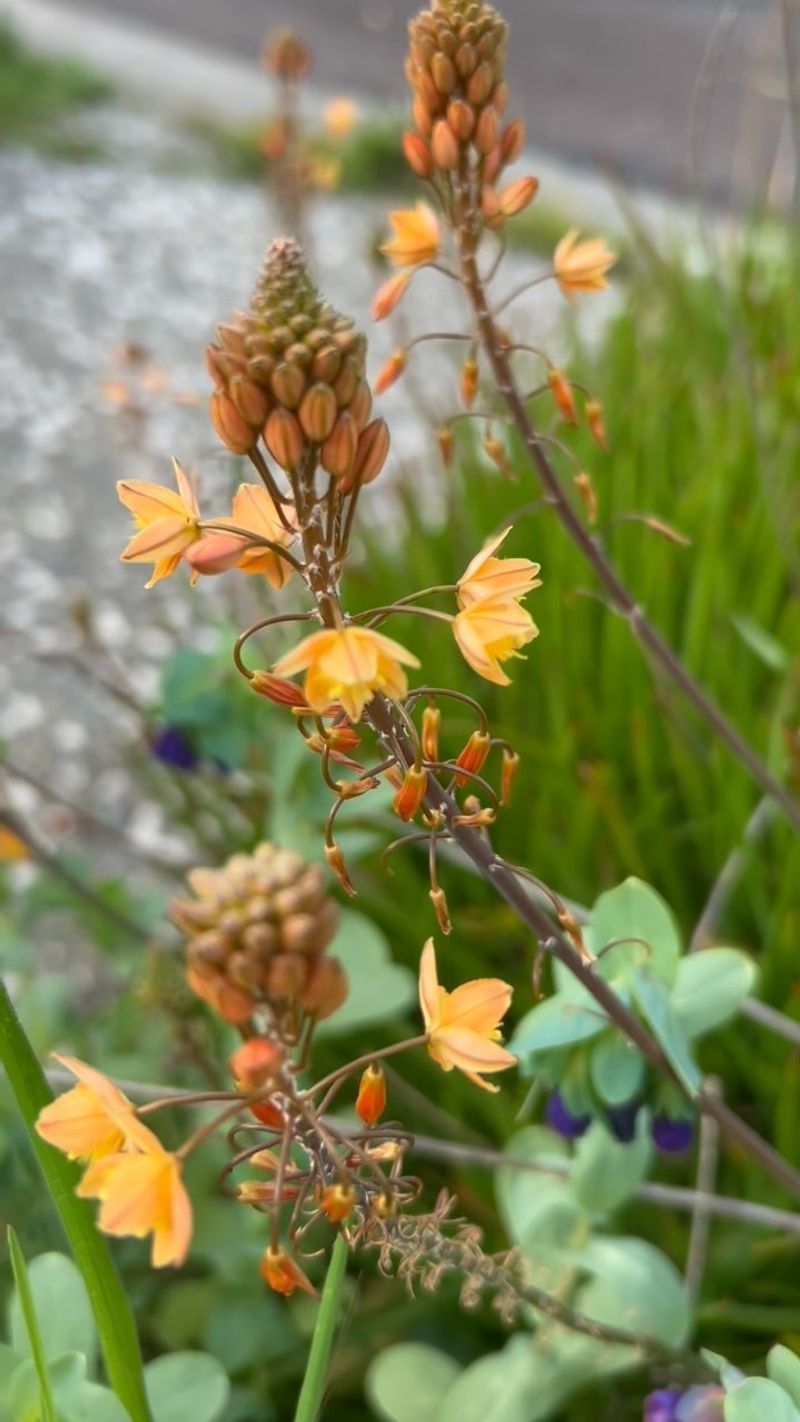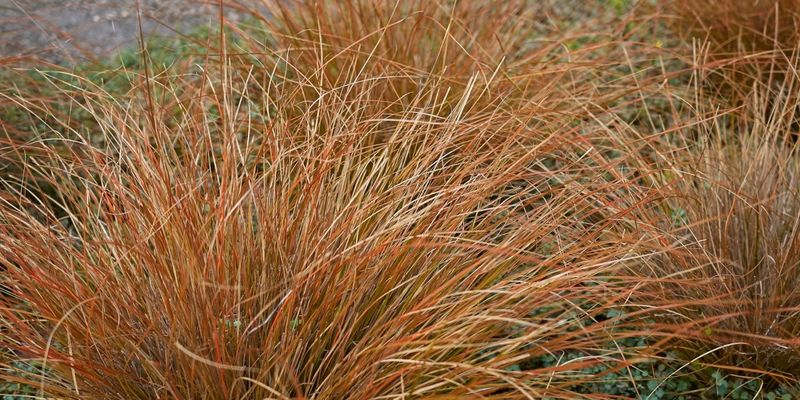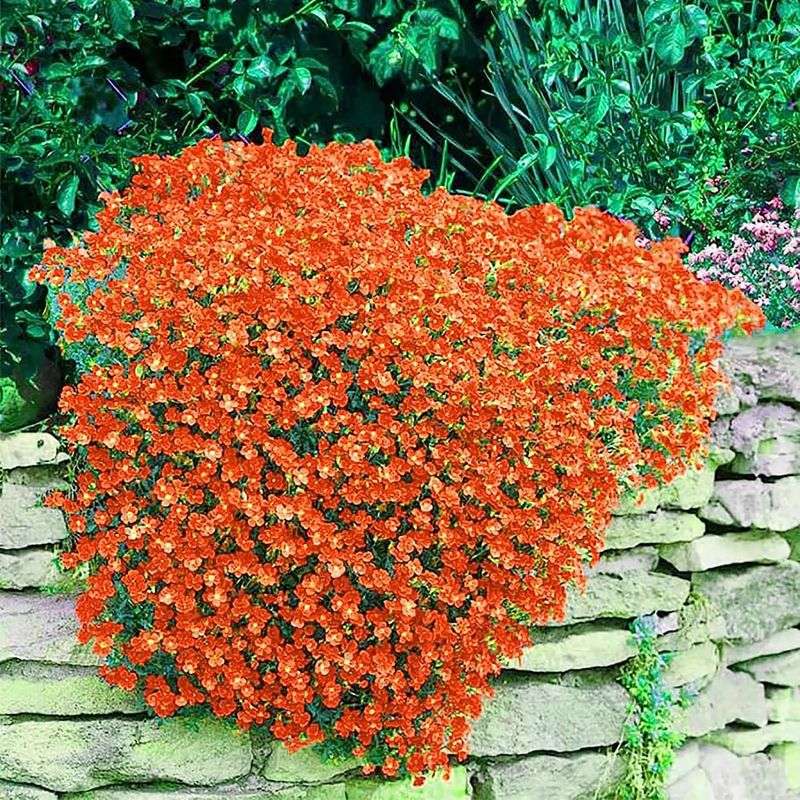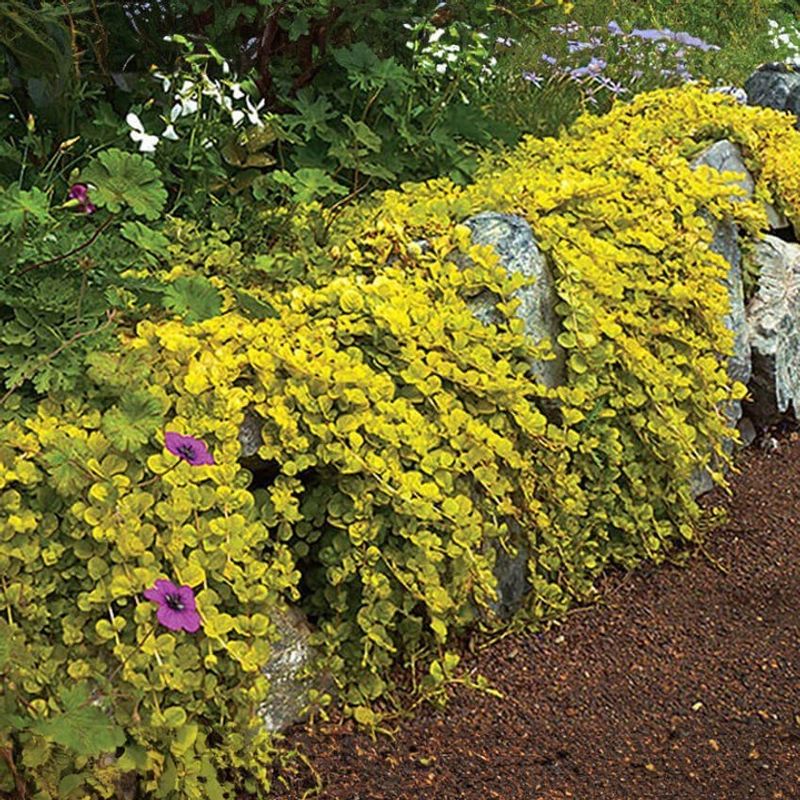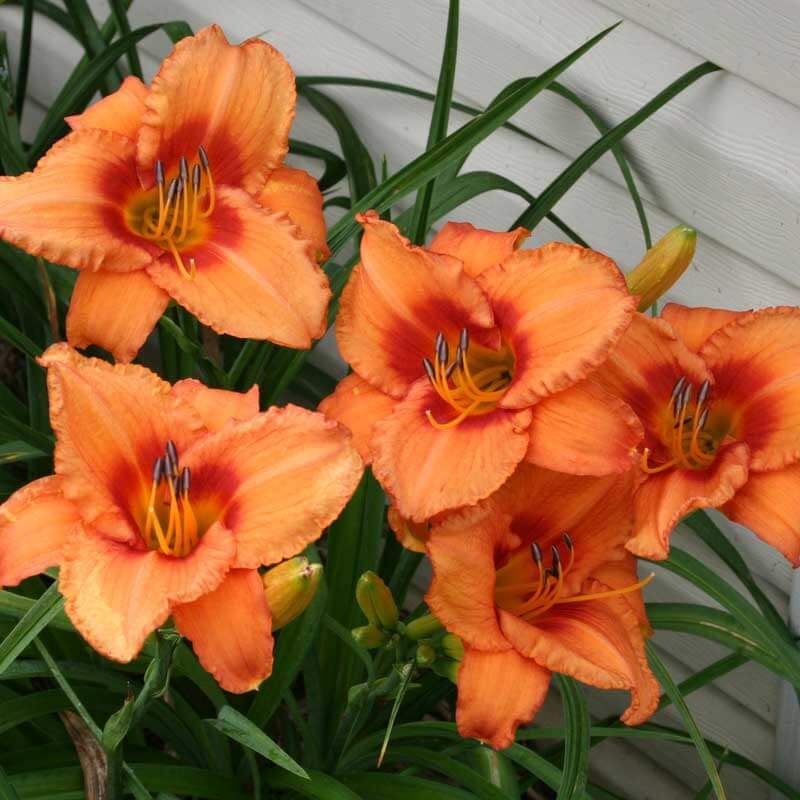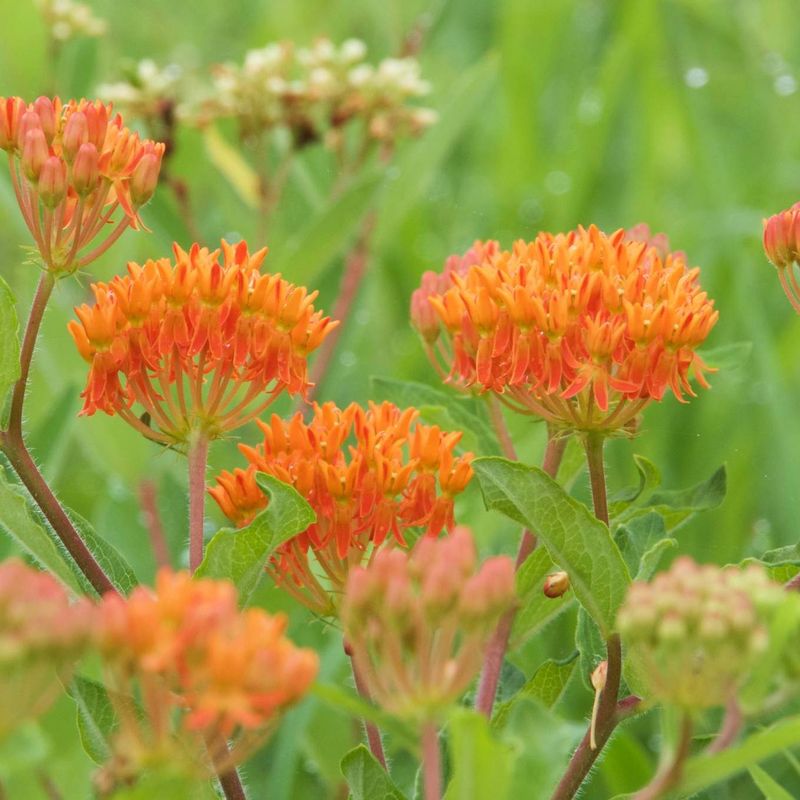There’s something irresistibly cheerful about a splash of orange in the garden—it instantly draws the eye and brings warmth to any space. And when that color comes from low-growing, easy-care ground covers? Even better.
Adding a touch of orange can really tie everything together. Plus, these plants often ask for very little in return once they’re established—perfect if you want maximum impact without a lot of fuss.
I’ll walk you through some standout options that bring both beauty and purpose to your garden. There’s a plant here for every style and space.
1. Orange Ice Plant
This succulent ground cover thrives in well-draining soil and full sun, making it low-maintenance and drought-resistant. Its daisy-like blooms add a cheerful touch to rock gardens and dry landscapes.
With its fleshy leaves and sprawling habit, it creates a carpet of color that’s eye-catching and effective at covering bare ground. Orange Ice Plant is perfect for hot, sun-drenched spots where other plants might struggle. Be mindful of overwatering, as this plant prefers drier conditions.
For a fuller appearance, space the plants closer together. This ensures quick coverage and less competition from weeds. Its bright, long-lasting blooms attract pollinators, adding life to your garden.
2. Creeping Zinnia
Why not try Creeping Zinnia for a touch of warmth? Its bright orange flowers dot the landscape, creating a lively ground cover. This annual plant enjoys full sun and adapts well to various soil types, making it a versatile choice for gardeners.
Creeping Zinnia is ideal for edging paths or filling in gaps between larger plants, offering a soft, carpet-like texture. Its resilience in heat and dry conditions makes it a reliable option for sunny borders. Deadheading encourages more blooms and a tidier appearance.
Despite its delicate appearance, this plant can withstand tough conditions and continue to thrive, rewarding gardeners with continuous blooms throughout the growing season.
3. Orange Carpet Hummingbird Trumpet
Want to attract hummingbirds? The Orange Carpet Hummingbird Trumpet is your answer. This ground-hugging plant sports tubular orange flowers that are irresistible to hummingbirds and bees.
Thriving in sunny, well-drained spots, it’s an excellent choice for rock gardens or xeriscapes. Its dense foliage and sprawling nature make it perfect for covering large areas quickly. Make sure to provide some space to sprawl, as it loves to spread.
Prune after flowering to maintain its shape and encourage more blooms. This hardy perennial handles drought well once established, reducing your water bills and labor.
4. Trailing Lantana
If you’ve got a sunny slope to cover, Trailing Lantana might do the trick. Known for its cascading habit, it spills over edges with ease, providing a visual treat of small, bright orange flowers.
This plant is perfect for containers, hanging baskets, or ground cover. Lantana thrives in full sun and tolerates poor soil, making it a carefree option for challenging spots. It’s also a magnet for butterflies, adding a delightful dynamic to your garden.
Keep in mind that Lantana is a vigorous grower, so regular trimming might be necessary to keep it in check. It’s a hardy plant, enduring heat and drought like a champion.
5. Gazania
For a sun-loving ground cover, Gazania is a reliable choice. Its striking orange blooms open wide in the sunlight, creating a dazzling display that’s hard to ignore. This plant thrives in full sun and well-drained soil, providing a burst of color in hot, dry areas.
Gazania’s evergreen foliage adds interest even when not in bloom, and its low-growing habit makes it a practical choice for borders or rock gardens. Its flowers close at night, adding a dynamic element to your garden.
Space Gazania plants evenly to ensure full coverage. Regular deadheading will promote a longer blooming season, keeping your garden lively with color.
6. California Poppy
Looking for a native plant that’s easy to grow? The California Poppy is a winner. Its delicate, cup-shaped orange flowers are a familiar sight in meadows and gardens alike.
This annual species thrives in full sun and poor soil, often reseeding itself for years of enjoyment. Its fern-like foliage adds a soft texture, contrasting beautifully with its vivid blooms. Perfect for wildflower gardens, it attracts pollinators while requiring minimal care.
The California Poppy is the state flower of California and symbolizes resilience. It’s not just pretty, but also tough, often blooming even in adverse conditions.
7. Orange Stonecrop
For those tricky spots, Orange Stonecrop offers a practical solution. This succulent ground cover is both hardy and ornamental, with fleshy leaves and small orange flowers. It’s perfect for rock gardens or areas with poor soil.
This plant thrives in full sun to partial shade and is drought-tolerant, making it easy to care for. Its low-growing habit creates a dense mat that suppresses weeds and prevents soil erosion.
This plant is a slow grower, so patience is key. But once established, it requires little maintenance and rewards you with beautiful, low-maintenance greenery and flowers.
8. Orange Sedge
Seeking something for wet areas? Orange Sedge could be your solution. Its graceful orange flower spikes and fine-textured leaves are a wonderful addition to water gardens or moisture-rich borders.
This perennial is suited to full sun or partial shade, offering versatility in placement. Its tussock-forming habit makes it excellent for adding texture and color contrast.
Plant Orange Sedge in groups for the best visual effect. It provides year-round interest with minimal effort, and its unique color can brighten even the gloomiest of garden corners.
9. Orange Nasturtium
If you’re looking to add edible beauty, Orange Nasturtium fits the bill. Renowned for its peppery leaves and vivid flowers, this plant is both decorative and culinary. It’s perfect for garden beds or containers, thriving in full sun and well-drained soil.
Its rambling habit makes it ideal for covering ground quickly, and it adds a burst of color to any space. Plus, the flowers and leaves are edible, adding a spicy note to salads.
Orange Nasturtium is a natural pest repellent, making it a beneficial companion plant in vegetable gardens. It’s as useful as it is beautiful.
10. Orange Bulbine
Orange Bulbine is a versatile choice for adding color and texture. Its star-shaped orange flowers rise above fleshy green leaves, providing a striking contrast. This plant thrives in full sun and well-drained soil, making it ideal for xeriscapes or borders.
Its clumping habit allows for easy propagation, and it tolerates heat and drought once established. Bulbine is also deer-resistant, a plus for gardeners in rural areas.
Use Orange Bulbine in mass plantings for a true statement. Its flowers attract pollinators, adding life and movement to your garden space, while requiring little maintenance.
11. Sedge ‘Orange Zinger’
For a touch of elegance, consider Sedge ‘Orange Zinger’. Its graceful, arching leaves have a subtle orange hue, providing year-round interest. This ornamental grass prefers partial shade and moist soil, making it suitable for woodland gardens.
Its clumping habit adds texture, and it pairs well with other shade-loving plants. ‘Orange Zinger’ is low-maintenance, requiring only occasional trimming to keep its shape.
Did you know? This sedge is not only decorative but also helps in erosion control, stabilizing soil on slopes or along water features. Its understated beauty complements a variety of garden styles.
12. Orange Thyme
Add fragrance and color with Orange Thyme. Known for its citrus scent and tiny orange flowers, it’s a delightful herb to add to garden borders or paths. This perennial thrives in full sun and well-drained soil, making it easy to grow.
Its low, spreading habit is perfect for edging or filling in gaps between stepping stones. Plus, its leaves can be used in cooking, offering a citrusy twist to dishes.
Trim Orange Thyme after flowering to maintain its shape and promote dense growth. Its aromatic foliage is a bonus, releasing fragrance as you walk by.
13. Golden Creeping Jenny
Though not strictly orange-flowering, Golden Creeping Jenny earns its place with its yellow-orange foliage. This fast-growing ground cover thrives in full sun to partial shade and moist soil. Its trailing stems create a carpet, ideal for softening edges or filling in around taller plants.
Golden Creeping Jenny is easy to grow and adapts to various conditions. It’s perfect for container spills or ground cover in moist areas, providing a bright backdrop throughout the year.
Regular mowing or trimming keeps it tidy and encourages new growth. Its vibrant color adds warmth to any garden setting.
14. Daylily ‘Orange Crush’
If blooms are what you desire, look no further than Daylily ‘Orange Crush’. Known for its large, trumpet-shaped flowers, it’s perfect for adding impact to borders or mass plantings.
This perennial thrives in full sun and well-drained soil, blooming in mid-summer with minimal care. Its clumping habit allows easy division for propagation.
Daylilies are so named because each bloom lasts just one day. However, ‘Orange Crush’ produces many buds, ensuring a long flowering period. It’s a hardworking plant that offers beauty and resilience in equal measure.
15. Orange Butterfly Weed
Need to support pollinators? Orange Butterfly Weed is a stellar choice. Its flowers attract butterflies, especially Monarchs, making it a valuable addition to any wildlife garden.
This perennial thrives in full sun and well-drained soil. It’s drought-tolerant, low-maintenance, and perfect for borders or naturalized areas. Its upright habit and long flowering season add structure and color.
Avoid overwatering, as Butterfly Weed prefers drier conditions once established. It’s not only decorative but also supports wildlife, contributing to a healthy ecosystem.

